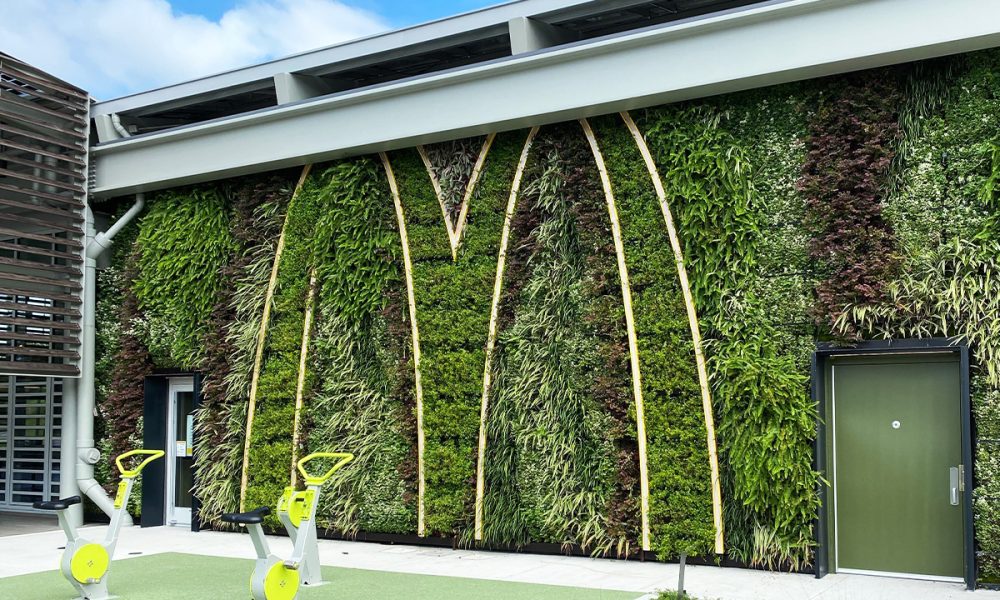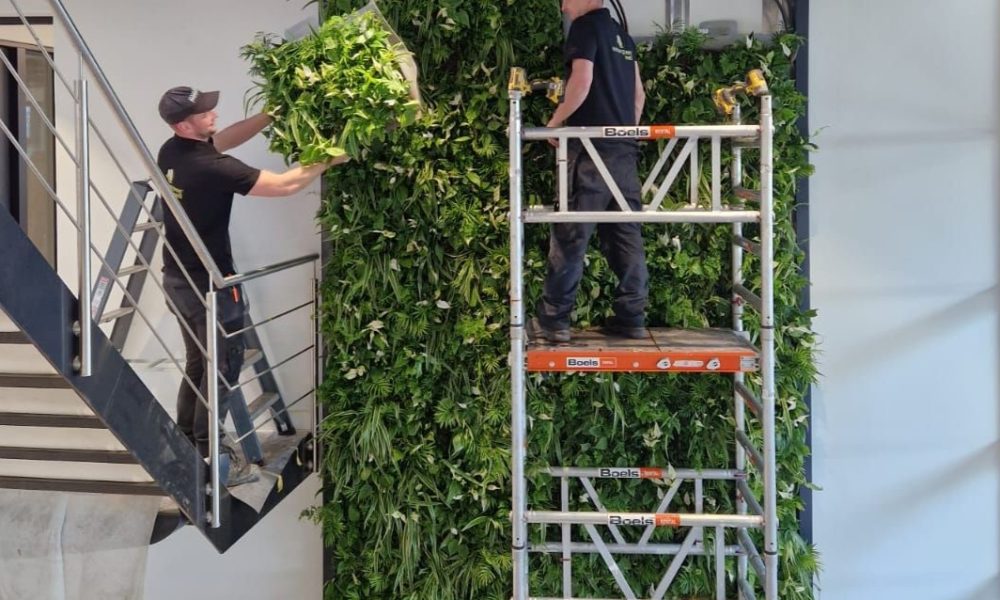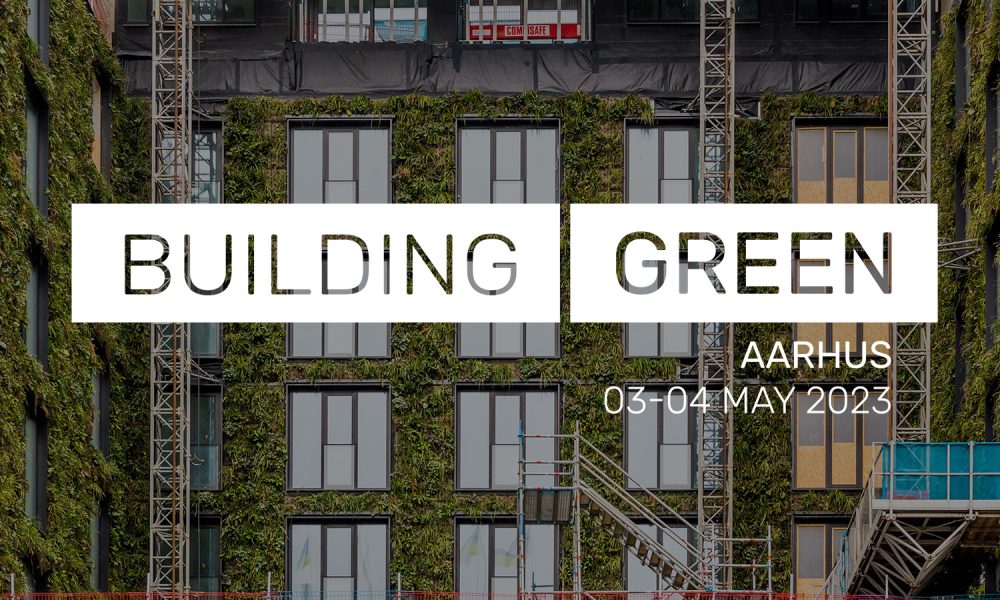Plants cannot live without water. So do the plants in the SemperGreenwall. This living wall system is equipped with a standard irrigation system, the Plant Care System. This irrigation system ensures that the plant wall is always supplied with the right amount of water and nutrition. Besides using mains water, it is also possible to collect rainwater and use it to water the vertical garden. In this article, Max de Vos, product developer at Sempergreen, explains how reusing rainwater for a SemperGreenwall works and – perhaps much more importantly – what benefits it has!
Climate change calls for saving drinking water
Climate change is increasing the average maximum summer temperature. A recentlypublished reportby the World Meteorological Organisation shows that Europe is warming even faster than other regions of the world. Over the past 30 years, temperatures have been rising 0.5 degree Celsius per decade, more than twice the global average. As a result, permafrost is melting and groundwater levels are falling. “With a few exceptions, such as Scandinavia, most of Europe loses much more groundwater each year than is replaced by rainfall and other recharge,” saysFamiglietti, hydrologist and director of the Global Institute for Water Security at the Canadian University of Saskatchewan. Researchers at this institute estimate the average total water loss in Europe since the beginning of this century at about 84 gigatonnes per year. To prevent water shortages and ensure drinking water supplies for the future, we will have to reduce the use of drinking water. So it is important to think about water-saving measures, including when installing a SemperGreenwall. Fortunately, there are solutions for this!

Photo byWesley TingeyonUnsplash
Saving drinking water by reusing rainwater for a SemperGreenwall
To keep the water consumption of a SemperGreenwall as low as possible, without compromising the health of the plants, Sempergreen has developed a special solution in collaboration withHB Watertechnologie回收雨水灌溉的SemperGreenwall. Max de Vos, product developer at Sempergreen says: “Reusing rainwater is a sustainable way to build water reserves and use them in times of drought, instead of using tap water.”
Investing in rainwater pays off
Applying rainwater for irrigation purposes is not only good for the environment and drinking water levels; it is also financially attractive. Rainwater is free and also widely available. Rainwater is also beneficial for the service life of equipment, because unlike tap water, rainwater does not contain lime. Thanks to the softer water, which doesn’t leave limescale deposits, pipes and taps last longer. Moreover, in some European countries, an investment in a SemperGreenwall with rainwater installation may be eligible for tax benefits as it contributes to reducing the use of ground, surface or tap water.
"Choosing to reuse rainwater to irrigate a SemperGreenwall is an extremely responsible and sustainable choice."
Max de Vos, product developer at Sempergreen
Is rainwater suitable for irrigating a living wall?
De Vos’ answer is adamant: “Yes! In fact, plants flourish more when using rainwater to water a SemperGreenwall. This has to do with the pH value, the chemical term for the acidity of water. Tap water has an average pH of 7.5, while rainwater is more acidic with a pH of 5 to 6. Plants are naturally used to rainwater, so the optimal pH for a plant is around 5. Although plants can also function well with tap water, the process of nutrient absorption is easier for the plant when using rainwater. By using captured rainwater for irrigation, you get even healthier and stronger plants in your vertical garden.”
How does rainwater reuse work with a SemperGreenwall?
De Vos explains: “A standard SemperGreenwall uses an irrigation system with a nutrient tank and a break tank, which is connected to the drinking water network. A break tank is required by law and protects the public drinking water network from possible backflow of contaminated water. If rainwater reuse is chosen, there will be an extra supply from an additional rainwater storage tank. The system is regulated so that rainwater from the storage tank is used first, and when the tank is empty, the system switches to tap water. This is a continuous interplay between the two supplies.” The diagram illustrates this proces.
What facilities are needed for rainwater reuse?
“The most important additional facility is a water storage tank, which can buffer rainwater for later use. This water storage facility is constructed by the customer and is often concealed underground. There should also be a power supply and a sensor cable for level control. This allows a low water level in the rainwater tank to be detected, so that a timely switch to mains water supply is made.

There should also be a pressure pipe, which pumps the water to the irrigation unit each time. In between is another filter. Sometimes people choose to place an additional filter in front of the tank as well, to prevent dirt from entering the water tank. In short, the extra water collection is a kind of extra break tank, but much bigger, with a pump and sensors in it, which ensure that the water level is maintained,” De Vos said.
How big is the water tank for rainwater reuse?
De Vos explains: “This mainly depends on the local government’s water storage requirement. The water storage requirement is usually set by the municipality or local water board. Depending on how many cubic metres of water storage is required, the size of the water tank will be adjusted accordingly.”
Rainwater harvesting on (green) roof also possible for irrigation plant wall
Instead of underground water storage, harvesting and storing rainwater on the rooftop of a building is also among the options for the irrigation of a green wall. De Vos: “Water storage on the rooftop of a building can take the form of aDetention or Retention Roof. This is a variant of the green roof, where rainwater is stored on the often unused roof surface. The water is then drained and stored in a water storage tank. Through indoor piping, rainwater from the roof and sometimes from the entire site is collected centrally in the storage tank. The tank is equipped with an overflow, in case of excess water due to extreme rainfall.”

“A variation on this, is that the rainwater collected on the roof is fed into the irrigation via a small intermediate buffer, which is cleverly controlled and continuously allows just enough rainwater to come down from the roof. You then do not need an underground tank, but feed the rainwater directly from the roof. A great example of this is the Roermond Water Board’s new building [see the example further below].”
Optimal savings through use of grey water
“A final option is, in addition to the stormwater extension module, to add an additional technique to reuse ‘grey’ wastewater. Grey water is an umbrella term for slightly contaminated wastewater containing, for example, soap residues, which comes from internal water flows in the building. To make that water usable, it needs to be treated using a sand filter combined with a UVC unit. The latter ensures the elimination of bacteria and viruses. If the water is heavily polluted, it is advisable to also install a ”Reverse Osmosis” installation. Then the water is completely neutralised into usable water. The result is thoroughly sustainable. In this way, a circular water system is created, realising the ultimate goal in water use!” says De Vos.
Are there any drawbacks to reusing rainwater?
De Vos: “Due to the reuse of rainwater, there is a chance that some dirt may come with it from the roof. Therefore, filtering the rainwater is always important, plus regularly checking the filters. The filters are self-cleaning, so blockages are fortunately rare. Nevertheless, it is wise to carry out regular maintenance and checks. Customers can do this themselves or take out a maintenance contract with Sempergreen. Then all care is taken out of their hands.”
Wondering what a SemperGreenwall that reuses rainwater looks like?
Sempergreen has already realised several projects where the SemperGreenwall is equipped with an irrigation system, which uses captured rainwater. For inspiration, we highlight some examples below:
Greenhouse - Berchem (Antwerp), Belgium
Antwerp city council is making every effort to make the city sustainable, liveable and green. One way they do this is with a special“climate allowance”, which subsidises the construction of greenery and reuse of rainwater. A perfect example of this is the office building Greenhouse Antwerp (the former Sky Building). Commissioned by Ambius BeLux, Sempergreen realised here a beautiful living wall, consisting of no less than 50,000 plants. The plant selection of the vertical garden, designed by CONIX RDBM Architects, includes a variety of native plants. The188bet金宝搏下载手机版uses rainwater collected on the roof of the office building and reuses it for irrigation. The rainwater is directed to a well with a collection capacity of 20,000 litres. The size of this well was determined using the precipitation model of Antwerp. The well has a pump with sensors. The computer-controlled pump makes it possible to supply the plants with water. As a result, the plants get exactly what they need without using tap water.
Lab4You - Amsterdam, the Netherlands
Lab4You is a new apartment complex in Amsterdam Sloterdijk, built byVink Bouw, which was built entirely from the wishes of the future residents. The result, designed byEngel Architects, is a distinct building with a sturdy appearance, meeting the highest standards of sustainability and comfortable living. All residents have their own balcony or terrace, which is fitted with a SemperGreenwall. All green plant walls are connected to the central irrigation system, using water from the rainwater drains of the entire complex. Heat and cold storage, underfloor heating and cooling, high-quality insulation, triple glazing and solar panels on the roof complement the apartment complex’s high sustainability ambitions.
Tram stop - Amsterdam, the Netherlands
The Dutch capitalAmsterdamis also taking measures to guard against the effects of climate change. For example, a number of tram stops in the busy and ‘petrified’ city have been fitted with a green roof. At the Weteringcircuit, Vijzelgracht stop, the green roof is combined with a plant wall at the bus shelter. On the green roof, rainwater is collected and then stored in an underground pump cellar. This water is used to irrigate the188bet金宝搏下载手机版at the tram stop. This innovative system resulted in the very first Rainproof tram stop in the Netherlands, a wonderful example of rainwater collection and reuse, while simultaneously greening the city. The green tram stops were created in cooperation with the City of Amsterdam, JCDecaux and the Amsterdam Rainproof platform. The platform aims to make Amsterdam resistant to the flooding caused by increasingly frequent peak showers.

Office Limburg Water Board - Roermond, the Netherlands
The Limburg Water Board knows better than anyone what the consequences of extreme weather conditions such as peak rainfall can be. So when theiroffice in Roermondneeded renovation, they wanted to set an inspiring example for others. The office building was completely sustainably transformed by MVD architecture and, among other things, fitted with an Outdoor SemperGreenwall. To save and reuse water, the ingeniousPlant Care System使用雨水从屋顶的雨水下水道irrigate the living wall system. The rainwater drains are disconnected from the sewerage system: rainwater is stored on the Retention Roof and diverted to bioswales via a visible waterfall. Storage for irrigation of the green facades takes place either in underground tanks or in above-ground vertical tanks that are themselves covered in plants. Infiltration of the remaining water takes place via bioswales or other infiltration techniques. In addition, many other water-robust solutions have been implemented on the property and in the surrounding area. With the renovation of their premises, the Limburg Water Board is taking great steps towards energy and water neutrality.
想知道更多关于雨水的重用the irrigation of a SemperGreenwall?
Inspired by the sustainable examples of green facades with the reuse of rainwater for irrigation? Curious about the possibilities for your project? Contact our living wall experts for a free consultation. They will be happy to help!




